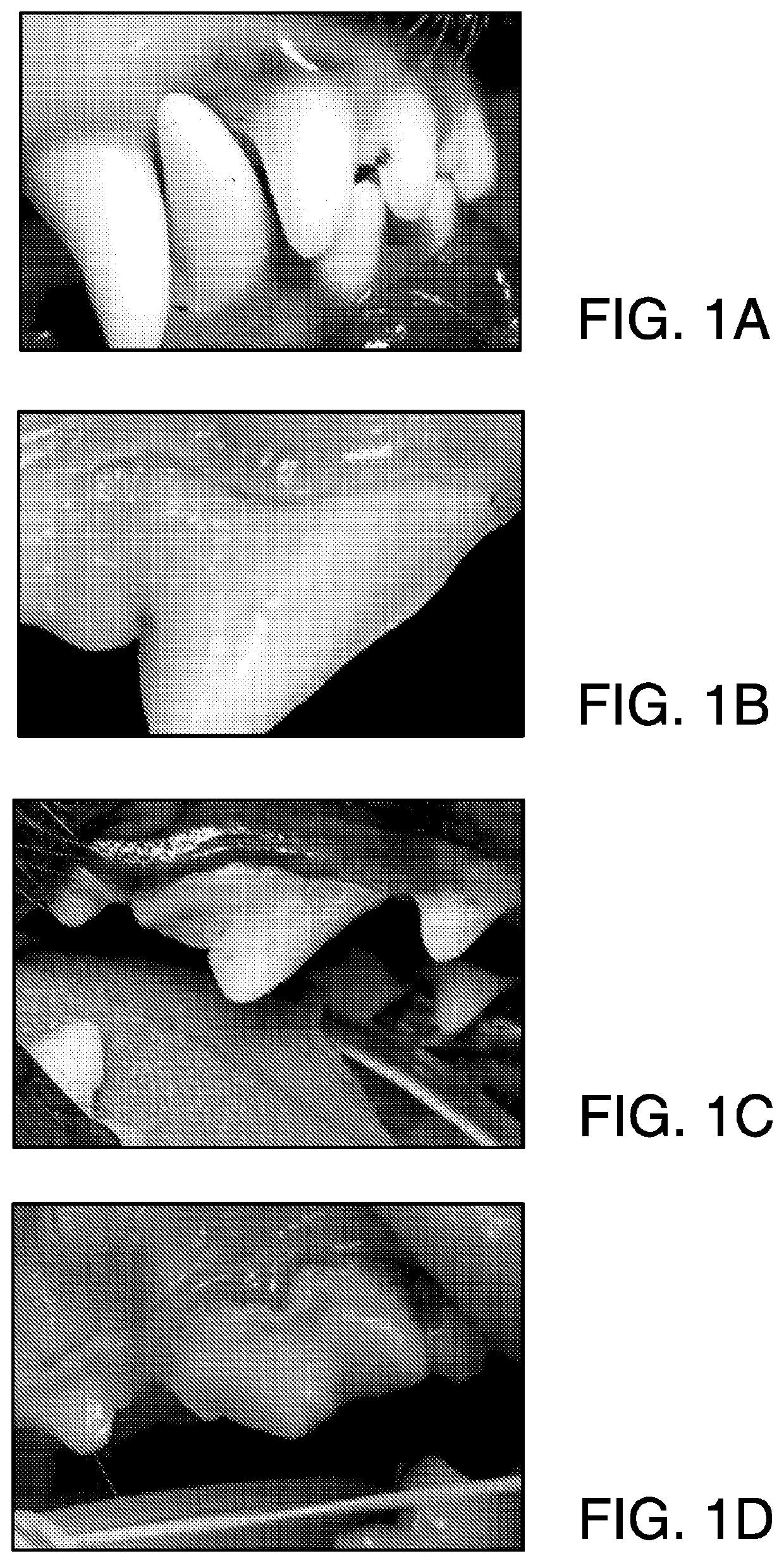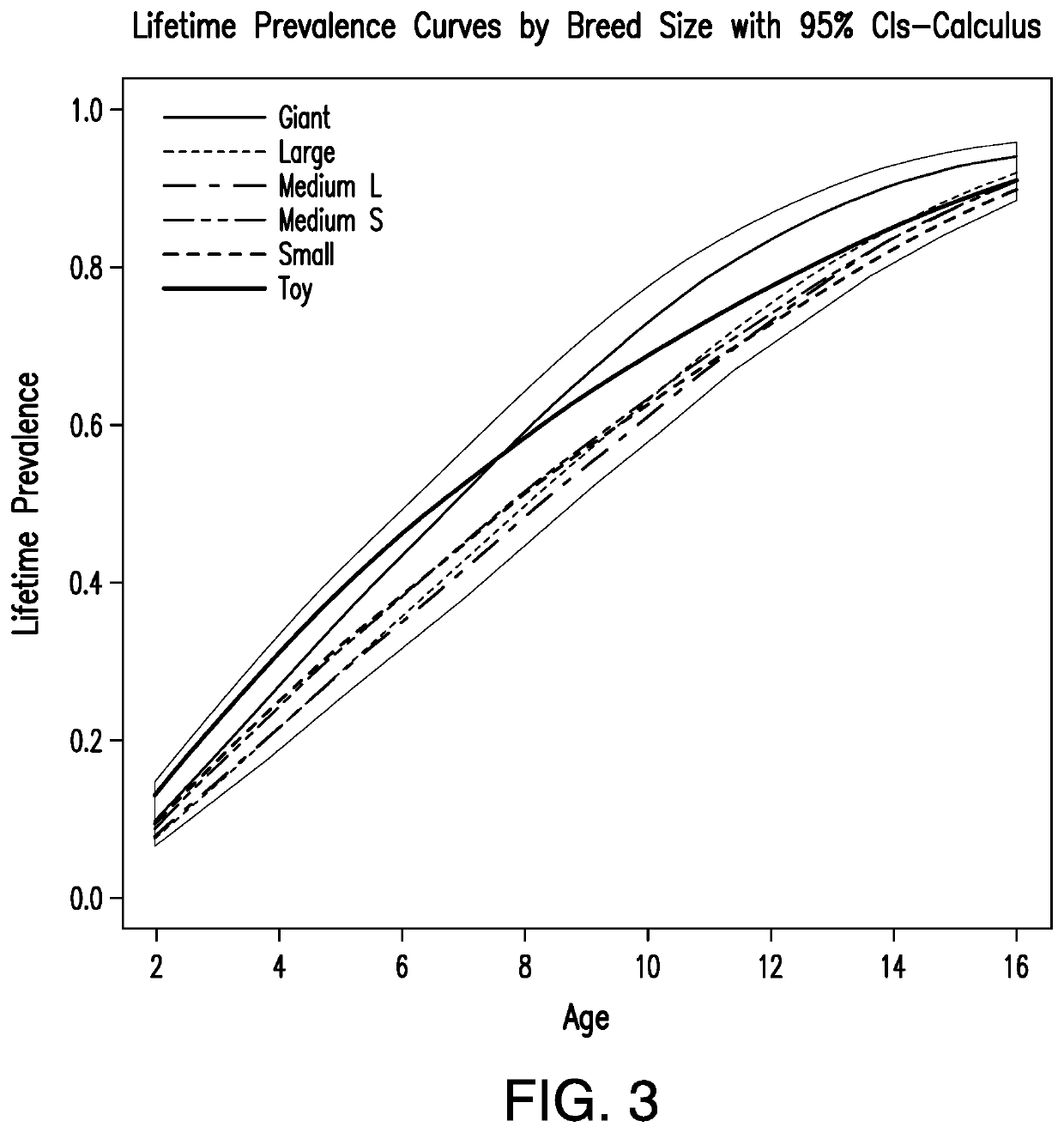Method or system for diagnosing periodontal disease
a periodontal disease and periodontal disease technology, applied in the field of periodontal disease diagnosis, can solve the problems of tooth loss, chronic pain, etc., and achieve the effects of reducing protein and calcium content, reducing plaque and tartar mineralisation, and cleaning the tooth surfa
- Summary
- Abstract
- Description
- Claims
- Application Information
AI Technical Summary
Benefits of technology
Problems solved by technology
Method used
Image
Examples
example 1
[0180]Analysis of Lifetime Prevalence and Period Prevalence of Periodontal Disease in Pedigree and Mixed-Breed Dogs
[0181]Lifetime prevalence was defined as the proportion of the dog population diagnosed with periodontitis, or dental calculus, by a particular age with the assumption that dogs had not been previously diagnosed in another veterinary practice. Canine in-patient visits from April 1994 to September 2015 for pedigree dogs of 100 breeds that most frequently visited a number of US vets and dogs identified as “mixed breed” were included in the lifetime prevalence analysis. Dogs described as non-pedigree were excluded as it was not clear if they were actually “mixed breed” or non-papered pedigrees.
[0182]Data was extracted from electronic medical record database for veterinary visits where periodontal disease was diagnosed (ailment descriptions included periodontal disease, periodontal pocket and periodontal disease grades 1, 2, 3 and grade 4). Information about the pet identif...
example 2
[0231]Determination of Susceptibility Relying on Physical Features other Than Breed.
[0232]Further analysis of data for prevalence of PD across ca. 60 dog breeds, revealed that in addition to the effects of age and body weight, there was an effect from skull shape
[0233]In performing an analysis, the case of Greyhounds was omitted, since this breed seems to be truly exceptional. However, the relationship between prevalence of periodontal disease and an Rp parameter as described in equation (1) above (i.e. (Age*Skull Type / Weight) was carried out. The correlation plot is shown in FIG. 8, with a respectable R2 value of 0.87.
[0234]The close correlation indicates that this algorithm is particularly useful in the case of dogs for which breed information is unavailable. As a result, it is possible to provide a quantification of the risk value for dogs of various head sizes as follows:
example 2a
[0235]Consider a large (30 kg), mesaticephalic dog, aged 2 years.
[0236]From Equation 1,
Rp=(2*2) / 30=0.133
[0237]From Equation 2,
L=0.0662*LN(0.133)+0.2137=0.080.
[0238]From Table 3 above, this dog would be assessed as LOW risk for periodontal disease.
PUM
 Login to View More
Login to View More Abstract
Description
Claims
Application Information
 Login to View More
Login to View More - R&D
- Intellectual Property
- Life Sciences
- Materials
- Tech Scout
- Unparalleled Data Quality
- Higher Quality Content
- 60% Fewer Hallucinations
Browse by: Latest US Patents, China's latest patents, Technical Efficacy Thesaurus, Application Domain, Technology Topic, Popular Technical Reports.
© 2025 PatSnap. All rights reserved.Legal|Privacy policy|Modern Slavery Act Transparency Statement|Sitemap|About US| Contact US: help@patsnap.com



